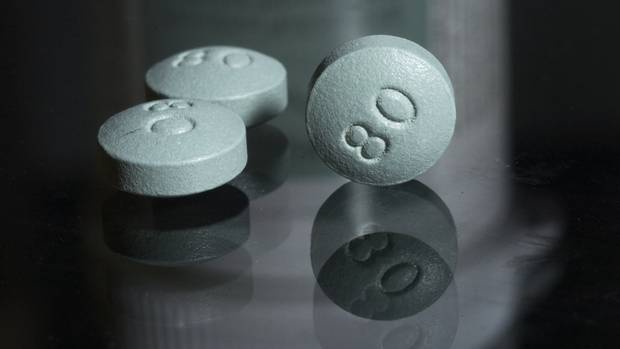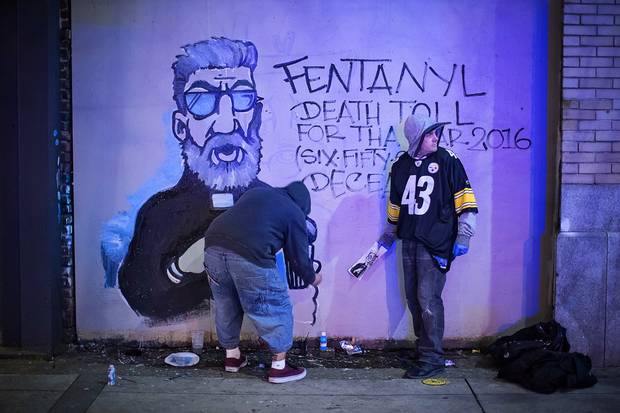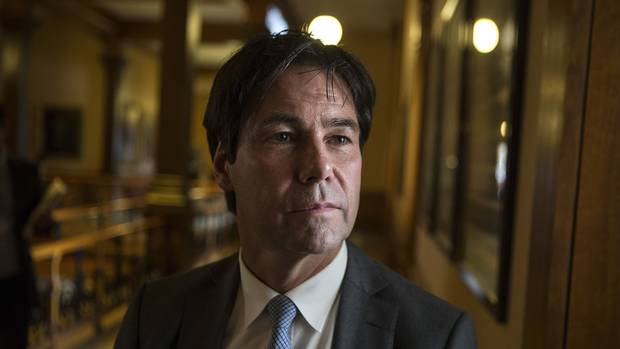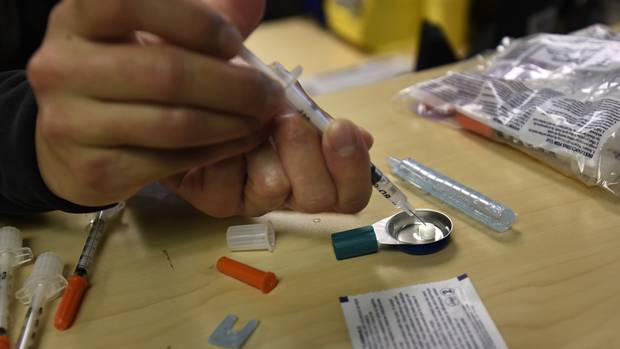How the crisis began
Canada's opioid epidemic traces back to an obscure source: The patenting of a new painkiller by a Pickering, Ont.-based pharmaceutical company in the 1990s. Purdue Pharma and its Canadian subsidiary called the drug OxyContin, and other drug makers spent years fighting patent feuds to make their own versions. But OxyContin was highly addictive, and its illicit use paved the way for the introduction of more hazardous drugs across Canada. Here's Grant Robertson and Karen Howlett's investigation of how one little patent caused so much controversy:
This is the story of how Patent ‘738 sparked the opioid crisis in Canada, with OxyContin serving as the gateway to an epidemic of addiction that has since spread to other, more hazardous substances such as fentanyl. It has left many dead, and many more ravaged by the drug and its implications. It is also a tale of how marketing – not necessarily sound medicine – helped turn “Patent ‘738” into one of the most profitable drugs the industry has seen in recent memory, and how careful Purdue has been to protect that empire, even as the damage spread.

OxyContin pills. When the drug was withdrawn from the market, many drug labs made counterfeit versions laced with fentanyl that were dyed green, smuggled into Canada and sold as ‘greenies’ or ‘shady eighties.’
KEVIN VAN PAASSEN/THE GLOBE AND MAIL
How the crisis came to Canada
In 2012, Purdue pulled OxyContin from the market and replaced it with a tamper-resistant alternative, OxyNEO. To fill the void, organized crime provided counterfeit versions and other opioids, introducing Canadians to fentanyl, a drug up to 100 times more toxic than morphine, and carfentanil, which is 100 times stronger than fentanyl.
Last year, The Globe's investigation "A Killer High" documented how easily fentanyl is being custom-made in China and smuggled into Canada, and how the provincial and federal governments fell short in curbing opioid prescriptions or preventing deaths:
The supply chain for illicit fentanyl begins in China, but the problems Canada is experiencing start right here at home: No other country in the world consumes more prescription opioids on a per-capita basis, according to a recent United Nations report. The widespread use of prescription opioids is behind the rise of a new class of drug addicts, many of whom are turning to the black market to feed their habit.
Understanding fentanyl, Canada’s newest public health crisis
What the crisis costs you
Opioid addiction's spread in the past decade has put a multimillion-dollar burden on provincial health-care systems. According to a Globe investigation last year, spending on drugs to treat painkiller addiction rose 60 per cent over a four-year period – from $57.3-million in 2011 to $93-million in 2014 – and provinces differed widely on how much they spent per person on the problem:
“The reason the amount of these medications being prescribed is going up is because the size of the problem of opioid dependence has gone up quite substantially,” said David Marsh, deputy dean and professor of clinical sciences at the Northern Ontario School of Medicine.
What the crisis looks like on the ground
A good place to see the devastating effects of opioid addiction up close is in Vancouver's Downtown Eastside on "Cheque Day," when thousands of people in the neighbourhood receive their social-assistance payments – money that many addicts spend on their next fix, sometimes putting them in deadly danger.
Last month, seven Globe reporters and two photographers spent 24 hours in the Downtown Eastside on 2016's last Cheque Day with first responders and injection-clinic staff:
Paramedics attend a call to an overdose victim in front of Insite. The man is lying unconscious, sprawled across the sidewalk when paramedics put an oxygen mask over his face. They inject naloxone into the man’s abdomen and, after a couple minutes, he wakes up. A friend tells the overdosed man he put all of his belongings in a bag and handed it over to the paramedics. Other people nearby aren’t paying attention; they are getting ready to inject.

Artist Smokey D, left, paints an anti-fentanyl art piece while his friend, Danny, keeps watch for police in Vancouver’s Downtown Eastside on Dec. 22, 2016.
BEN NELMS FOR THE GLOBE AND MAIL
Can Ontario prevent a crisis of its own?
Bootleg fentanyl's impact in Ontario is less pronounced than in B.C. or Alberta, but that might be changing. Toronto police seized more than three kilograms of fentanyl last year, up 750 per cent from the approximately 350 grams confiscated the year before. Toronto is ill-prepared for drug problems on the same scale as Vancouver's, with less widespread access to the overdose antidote naloxone and no real-time tracking of overdoses or overdose-related deaths. Monday's meeting of the Toronto Early Warning and Alert Partnership is intended to prevent a crisis before it starts, The Globe's Kelly Grant explains.
Monday also saw a breakthrough in the city's plan to open supervised injection sites like Vancouver's Insite facility. Toronto city councillors voted in favour of the sites six months ago, but were waiting for the province to commit to a requested $400,000 in funding to renovate three existing health clinics and $1.8-million annually to operate them. In a letter to his federal counterpart, Ontario Health Minister Eric Hoskins said Monday that the province has agreed to pay in part for the injection sites, as well as one in Ottawa, which would still need to be formally approved by Health Canada:
I believe these initiatives around supervised injection services are an opportunity to bring together all jurisdictions to tackle addictions and narcotics misuse.

Ontario Health Minister Eric Hoskins scrums with journalists at the legislature in Toronto on March 5, 2015.
CHRIS YOUNG FOR THE GLOBE AND MAIL
With reports from Karen Howlett, Grant Robertson, Kelly Grant and The Canadian Press
OPIOID ADDICTION: MORE FROM THE GLOBE AND MAIL
On the ground with Downtown Eastside firefighters battling opioid overdoses
Life lost: One mother’s tragic slide into fentanyl addiction



